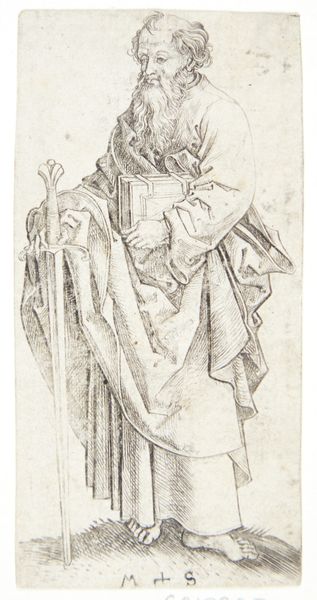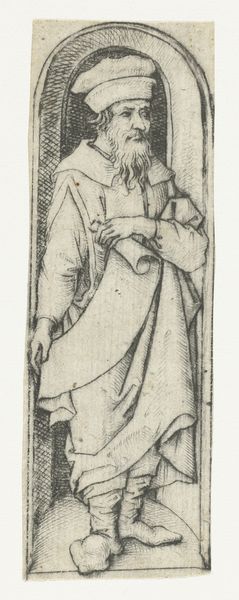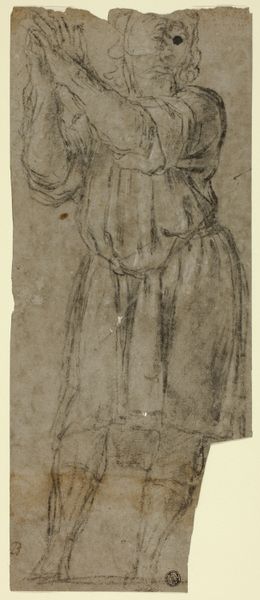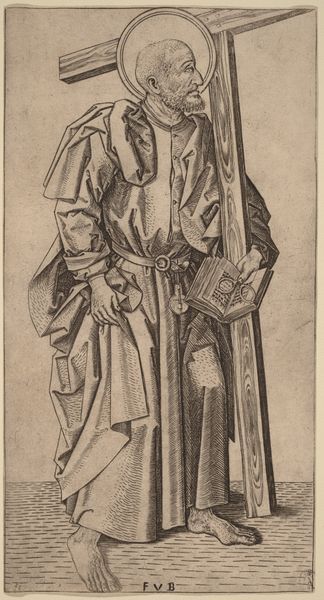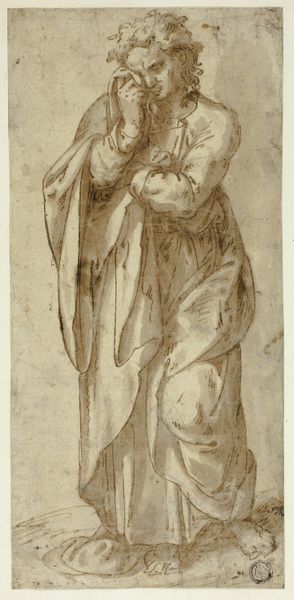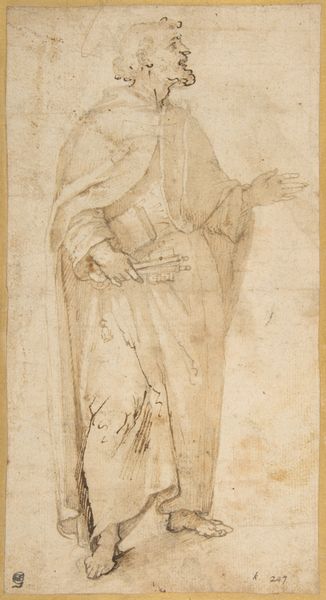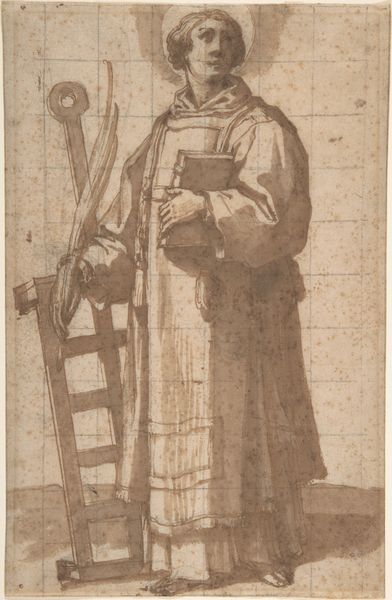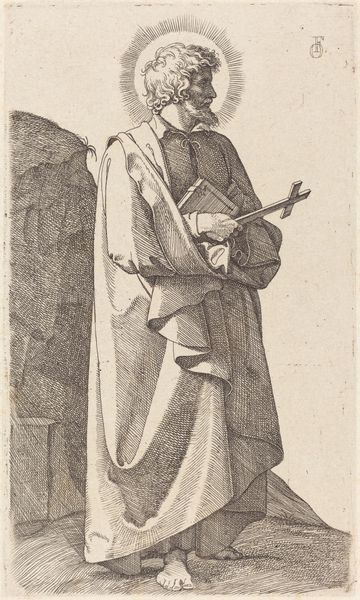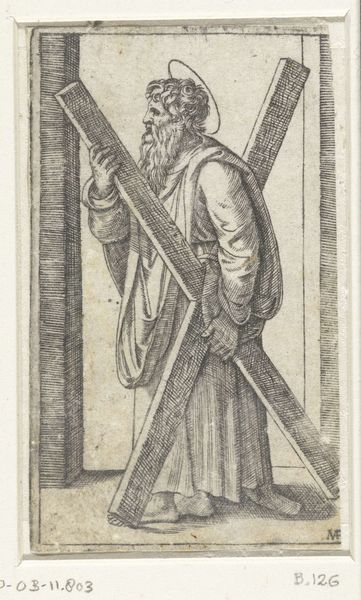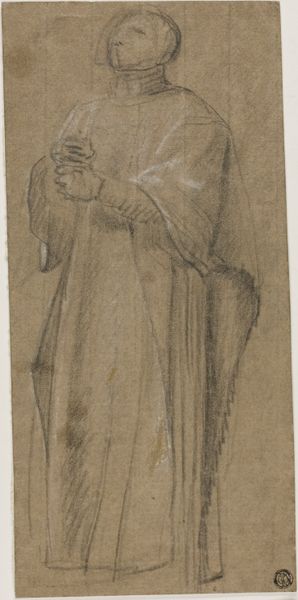
Standing Scholar (Prophet?) Turned to the Right (Recto); Standing Scholar (Prophet?) Turned to the Left (Verso) 1457 - 1473
0:00
0:00
Dimensions: 7 11/16 x 3 9/16 in. (19.5 x 9.1 cm)
Copyright: Public Domain
Curator: This drawing, created between 1457 and 1473, comes from the Middle Rhine region of Germany. It's titled "Standing Scholar (Prophet?) Turned to the Right (Recto); Standing Scholar (Prophet?) Turned to the Left (Verso)." Editor: The first thing I notice is the vulnerability communicated through the raw graphite lines. The scholar's garb seems weighty, almost burdening him, and contrasts sharply with the bare feet which somehow accentuate a humility. Curator: That's interesting, because I read his elaborate costume differently. The folds and layers speak to the ways status and knowledge were visualized in the late medieval period. The gesture of the open hand is also interesting as a kind of signifier about public performance, while also holding what seems like a book. How is authority claimed and expressed? I can't help but read gender into this portrait as well. What performative function did dress and bearing play for medieval men? Editor: You make me consider how the symbols may point beyond a mere claim to authority, perhaps even to a spiritual obligation. The exposed feet bring forth questions of piety, the weight of learning offset against the physical burden of his uncovered humanity. Curator: His stance and expression further emphasize an introspective contemplation, almost burdened by prophecy. I want to know how it played out during this moment in history. Who exactly would this figure have been and how did those identity markers intersect? How does that interplay define him, what would it mean in society then, and in modern understanding? Editor: There’s something incredibly compelling about his gaze; a learned yet accessible and burdened man who presents, holds, and offers his own teachings. Curator: The artist certainly captured something resonant here about intellect, humility, power, and responsibility during the early formation of humanist philosophy in Europe. Editor: This close observation of detail suggests that we are seeing a vital turning point in art's treatment of humanity, which resonates into today. Thank you.
Comments
No comments
Be the first to comment and join the conversation on the ultimate creative platform.

